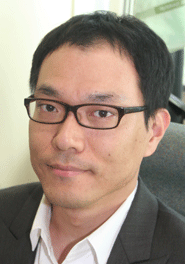경쟁력 제고 위한다면 공공성 위한 정책적 배려 필요
필자는 방송법 시행령 개정(안)의 전반적인 취지 즉, ‘규제완화를 통한 시장의 활성화’에 대해 동감하는 편이다. 이를 통해서 대기업들의 투자가 촉진되고 나아가 방송시장의 경쟁력이 높아질 것으로 기대한다. 단 아쉬운 것은 방송법 시행령 개정(안)에서 공공성과 공정경쟁을 위한 정책적 배려를 찾아보기 힘들다는 점이다.
‘공공성’의 확보 절실
먼저, 방송법 시행령 개정(안)은 지상파방송사와 유료방송시장의 보도·종합편성 채널(PP: Program Provider)에 대한 대기업의 소유 제한을 자산총액 3조에서 10조이상으로 완화시키는 내용을 담고 있다.
이 시행령이 원안대로 확정, 공표된다면, 자산총액 3조이상 10조미만의 대기업들은 여론 형성에 지대한 영향을 미칠 수 있는 방송사를 소유할 수 있게 된다. 추가적으로 소유권 제한의 완화, 민영화, 신문방송 겸영 허용 등의 조치가 뒤따를 것으로 보여, 대기업과 신문 자본이 방송분야로 속속 진입할 것이다. 이런 탈규제의 추세로 융합시대에 보다 강조되어야 할 참된 ‘공공성’의 확보 즉 정치권력과 자본으로부터 독립되어 바른 목소리를 낼 수 있는 매체의 확보에 큰 차질이 빚어질 것이다.
특히 현재 지상파방송체제 즉 3공영(KBS1, 2, MBC) 1민영(지역 민영방송사) 체제에서 지상파방송사 중 하나를 대기업이 소유하게 된다면, 이는 공공성의 위축과 위기를 불러올 것이 자명하다. 따라서 먼저 참된 ‘공공성’ 확보를 위해서 정책적 정비 이후에 지상파방송사에 대한 규제완화를 논의해야 한다. 이런 뜻에서, 현 시행령 개정에서는 지상파방송사를 제외한 유료방송시장에서 보도·종합편성 PP에 대해서만 소유 제한을 완화하는 것이 바람직하다.
배려없는 경쟁
다음으로, 종합유선방송사인 SO(System Operator)의 시장점유율 제한 규제에 대해서 살펴보자. 방송법 시행령 개정(안)은 수평적으로 겸영할 수 있는 한도를 전체 SO 가입가구 수의 33%이하로 그리고 방송구역 77개의 33%로 완화하는 내용을 담고 있다.
그 개정 이유를 살펴보니, ‘가입가구 수’라는 기준 변경을 강조하고 있고, 이는 IPTV법안의 기준과 유사하게 조정해서 규제의 형평성을 유지하고자 하는 목적을 지닌다고 한다.
하지만, 지나치게 ‘가입가구 수’를 강조하다보니, 개정(안)이 형식논리에 빠져들어, SO의 수평적 겸영 제한이라는 법의 본래 취지 즉 ‘공정경쟁과 콘텐츠 다양성 확보’를 제대로 살리지 못하고 있다. 첫째, 이 개정(안)은 IPTV에서처럼 ‘유료방송시장’이 아닌 ‘SO시장’의 가입가구 수를 기준으로 삼고 있어, 공정경쟁 차원에서 여전히 타 경쟁매체(예, IPTV)와의 규제 형평성에 한계를 갖는다. 이는 모법인 방송법 내에서 다루어져야 할 문제이며, 차후 방송법 개정 나아가 통합법 논의 과정에서 자연히 풀릴 것이다.
수요독점적 지위 양산 우려
둘째, SO의 시장점유율 제한 완화가 콘텐츠 다양성 확보 즉 PP의 다양성 확보라는 취지에 크게 어긋난다는 점이다. 특히 MSO(종합유선방송사업자, Multiple SO) 또는 MSP(종합유선방송사업자 + 방송채널사용사업자 , Multiple SO+PP)가 유료방송시장의 콘텐츠 수급에 있어서 절대적인 영향을 끼치고 있어, 경쟁매체인 위성방송사와 IPTV사업자들을 위해서는 오히려 MSO 또는 MSP에 대한 비대칭적 규제가 필요한 시점이다. 즉 SO에게 상대적으로 불리한 규제가 더 필요하다. 이를 통해서 경쟁매체들 간의 콘텐츠 수급에서 공정경쟁 환경이 형성되면, 이들 매체에게 프로그램을 제공하는 PP들이 다양한 콘텐츠를 생산해 낼 수 있다. 이러한 공정경쟁에 대한 정책적 배려가 없이 기존 MSO사업자의 수요독점적 지위를 강화하는 방향으로 개정이 이루어진다면, 이 개정(안)은 국민적 공감대를 얻기 힘들다.
공정경쟁정책이 선행과제
결론적으로, 우선 소유권 규제완화에 대한 논의가 공정경쟁정책 관점에서 정리가 되고, 이후 이를 반영한 시행령 개정으로 유료방송시장에서 소유 또는 겸영 규제완화가 이루어져야 한다. 또한 규제완화를 위한 개정에서 왜 33%인가에 대한 실증적이고 과학적인 근거를 명확히 제시할 필요가 있다. 이를 위해서 최근 미국연방통신위원회(FCC)가 SO의 수평적 소유 규제의 한도를 다채널비디오프로그램유통(MVPD)시장의 가입가구 수를 기준으로 30% 점유율로 둔 근거를 참고할 만하다.
결국 지금의 방송법 시행령 개정 범위를 최소화하고, 향후 관련법들이 개정 또는 통합되는 과정에서 위의 규제완화 문제들이 다시 논의되는 것이 바람직하다.

강 재 원
신문방송학과 조교수

